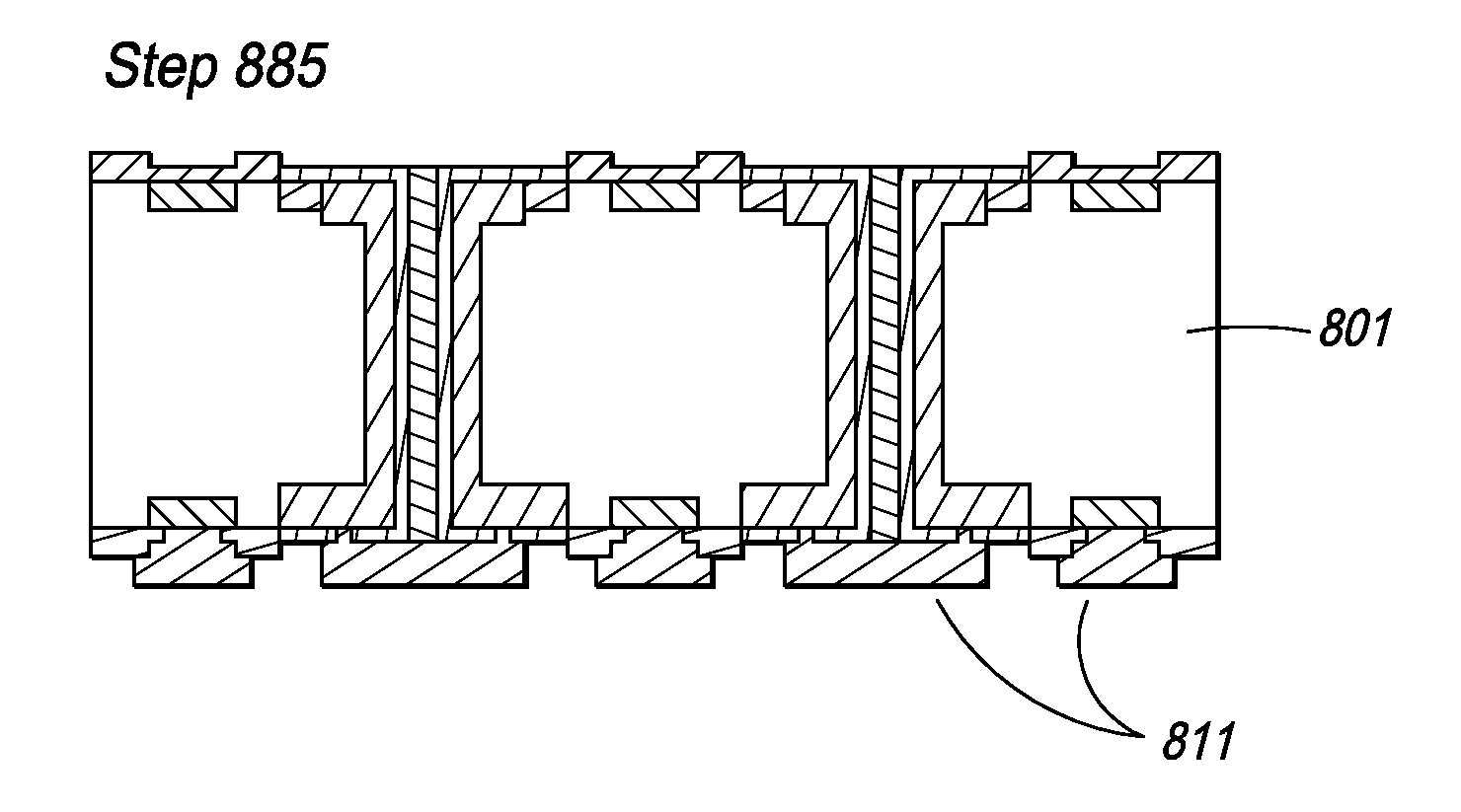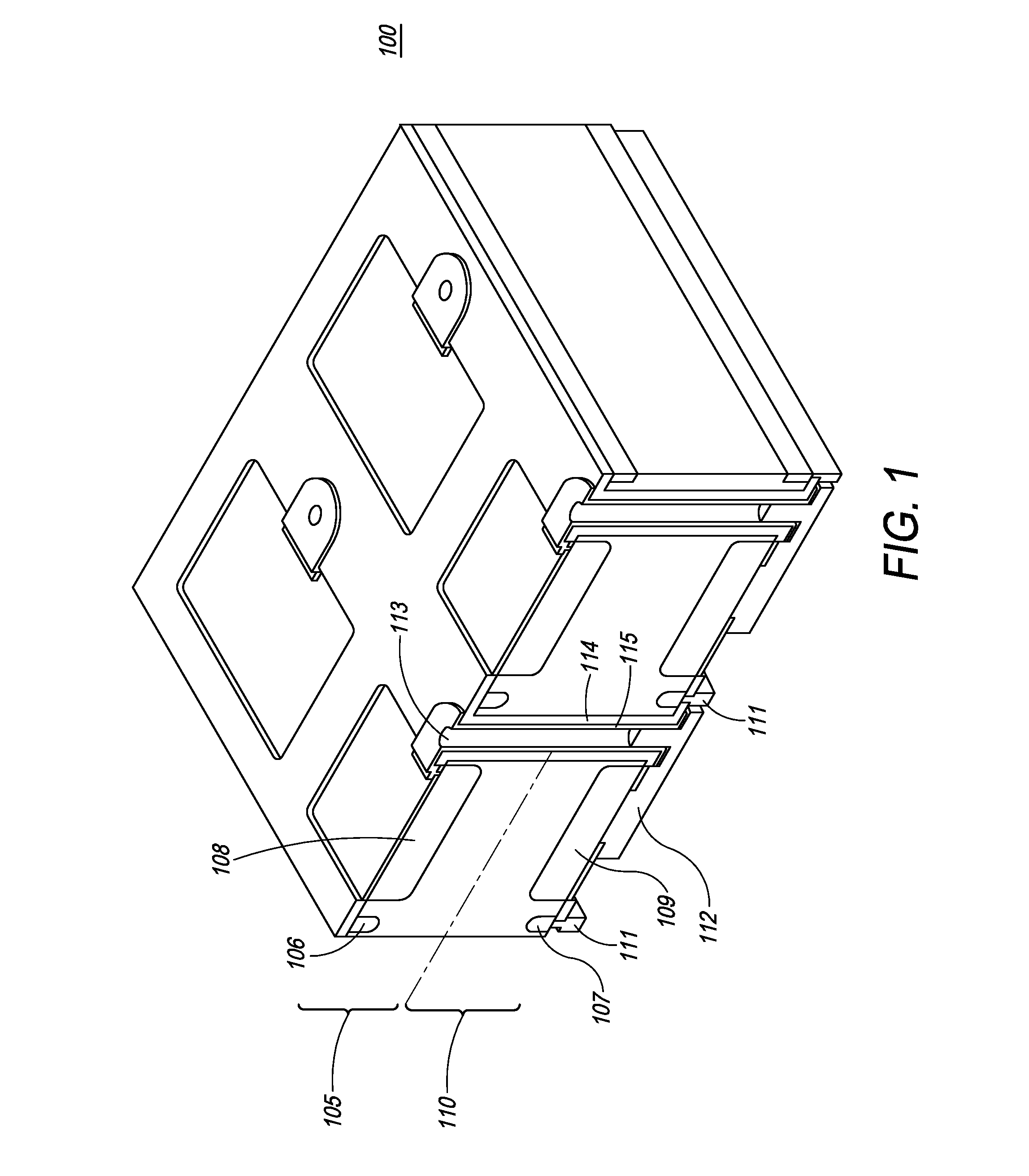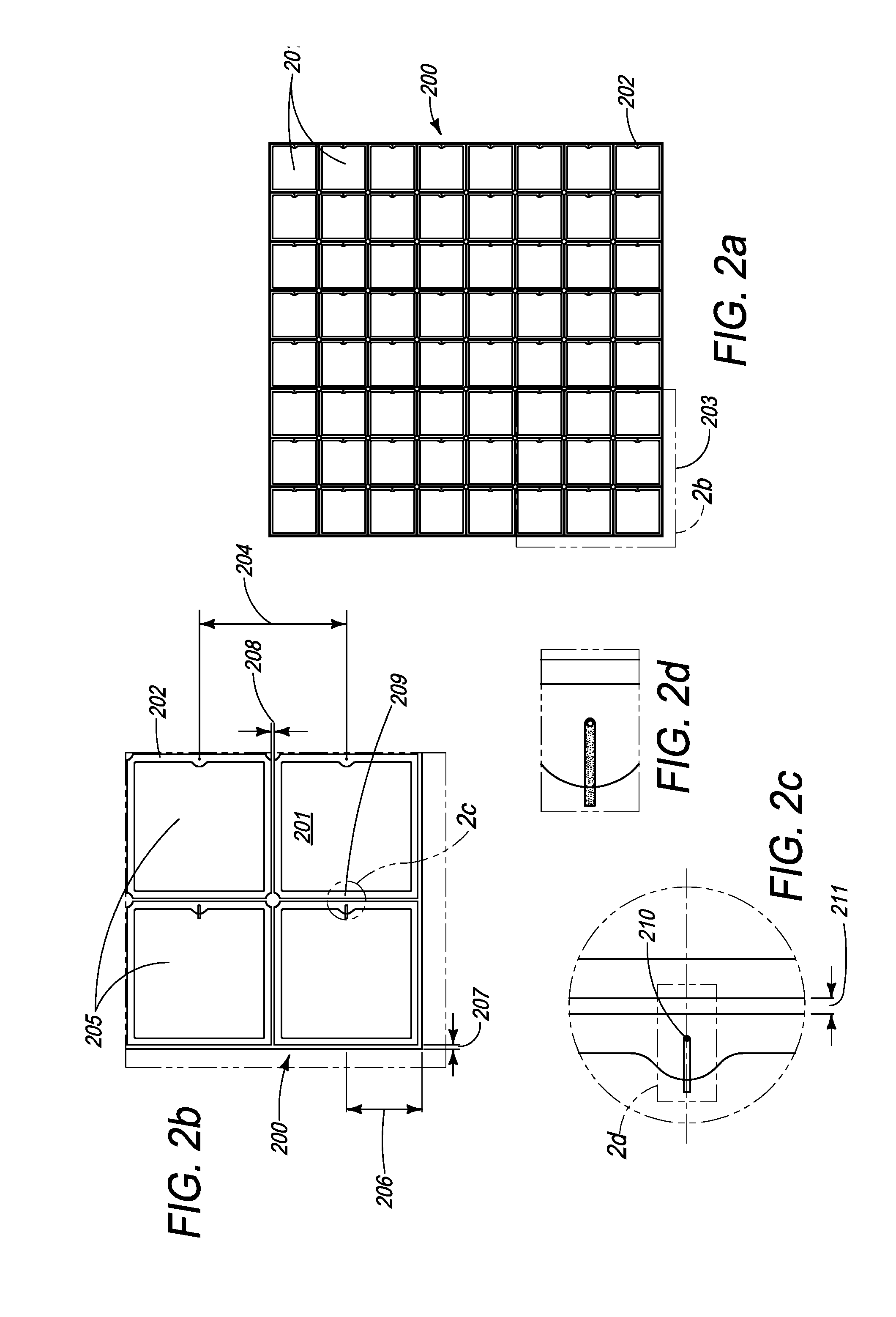Front-side illuminated, back-side contact double-sided PN-junction photodiode arrays
a photodiode array and back-side contact technology, applied in the field of thin wafer photodiodes, can solve the problems of negating the benefits of the smaller device size, difficult to provide efficient interconnection between devices, and unmatched user-friendliness, and achieve the effect of maintaining the overall performance characteristics of the photodiode array and individual diode units
- Summary
- Abstract
- Description
- Claims
- Application Information
AI Technical Summary
Benefits of technology
Problems solved by technology
Method used
Image
Examples
first embodiment
[0038]FIG. 1 is a cross-sectional view of a front-side illuminated, back-side contact (FSL-BSC) double-sided PN-junction photodiode array formed in accordance with the present invention. In one embodiment, photodiode array 100 is preferably formed from a device wafer of suitable semiconductor material. For example, but, not limited to such example, a silicon wafer is used as the starting material for the photodiode array of the present invention. In one embodiment, the starting material is a silicon wafer having the following specifications: a 6-inch diameter; a thickness ranging from 0.210-0.260 mm; n-type conductivity; and a resistivity on the order of 8000 Ωcm. In another embodiment, the starting material is a silicon wafer having the following specifications: a 5-inch diameter; a thickness ranging from 0.210-0.260 mm; n-type conductivity; and a resistivity on the order of 8000 Ωcm. The above specifications are merely for the purposes of illustration, and are not limiting. Conseq...
second embodiment
[0080]For example, but not limited to such example, if regions 506, 507, 508, and 509 are doped with a suitable impurity of a first conductivity type wherein the first conductivity type is n-type, then regions 511a, 511b, 511c, 511d, 511e, and 511f are doped with a suitable impurity of a second conductivity type, wherein the second conductivity type is p-type. The second embodiment will be described with respect to this scenario, but it should be noted herein that the photodiode array of the present invention and method of manufacturing the same is not limited to the embodiment described herein.
[0081]In one embodiment, the present invention comprises PN-junctions on both front and back sides of the wafer. While boron (B) and phosphorus (P) are the preferred p-type and n-type dopants employed to create the p+ and n+ regions, it should be understood to those of ordinary skill in the art that any suitable doping material may be used. Preferably, doped diffusion regions 511a, 511b, 511e...
PUM
 Login to View More
Login to View More Abstract
Description
Claims
Application Information
 Login to View More
Login to View More - R&D
- Intellectual Property
- Life Sciences
- Materials
- Tech Scout
- Unparalleled Data Quality
- Higher Quality Content
- 60% Fewer Hallucinations
Browse by: Latest US Patents, China's latest patents, Technical Efficacy Thesaurus, Application Domain, Technology Topic, Popular Technical Reports.
© 2025 PatSnap. All rights reserved.Legal|Privacy policy|Modern Slavery Act Transparency Statement|Sitemap|About US| Contact US: help@patsnap.com



